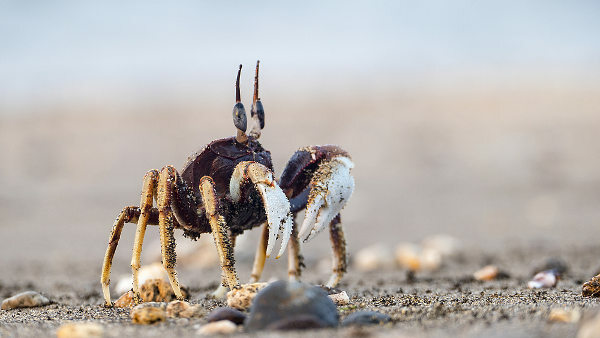Mute or ecdysis is a process that takes place in arthropods and is characterized by the exchange of the skeleton of these animals to ensure its growth. This process is essential, as these invertebrates have an external skeleton, which makes continuous growth impossible.
→ Arthropod Exoskeleton
One of most striking features of an arthropod is the presence of a exoskeleton chitinous or cutin that covers your entire body. Despite being rigid, the animal it gets its movement thanks to the joints. Because of this property, the phylum received the name Arthropoda, which means “articulated feet”.
The exoskeleton of arthropods is formed by an epicuticle and a procuticle composed of an outer exocuticle and an inner endocuticle. The epicuticle is made up of proteins and wax, while the procuticle is rich in chitin.
→ How does molting occur in arthropods?
The exoskeleton has several advantages in terms of support, protection against water loss and predators, and even movement. However, represents a serious problem when it comes to growth
, therefore, it is periodically eliminated to allow the animal's body grow up.Do not stop now... There's more after the advertising ;)
For molting to occur, the animal begins to produce inactive enzyme precursors at the base of the skeleton. The epidermis breaks away from the skeleton and begins to produce a new epicuticle. Inactive enzymes are activated and begin to digest the endocuticle. The epidermis produces a new procuticle, which lies under the old one. It is clear, then, that the arthropod is trapped inside two exoskeletons, the old and what is forming.
The ancient skeleton begins to break down at specific, predetermined points called fracture lines or ecdysis lines. The animal leaves its old skeleton, already enveloped by the new one, however, this is soft, which leaves the animal unprotected. Also, the exoskeleton that was just formed it's all wrinkled and, over time, it stretches to accommodate the new animal, now a little bigger. This adaptation of the exoskeleton to the new body is possible thanks to the blood pressure in the animal's body. Hardening, in turn, occurs after the stretching of the exoskeleton has been completed.
By Ma. Vanessa dos Santos
Would you like to reference this text in a school or academic work? Look:
SANTOS, Vanessa Sardinha dos. "Muting or ecdysis in arthropods"; Brazil School. Available in: https://brasilescola.uol.com.br/biologia/muda-ou-ecdise-artropodes.htm. Accessed on June 27, 2021.
Biology

Expand your knowledge about crustaceans, animals well known for being part of the diet of many people. In this text, we will address the main characteristics of crustaceans, their feeding, breathing, reproduction and we will also get to know some examples of these animals.
